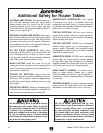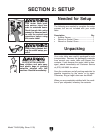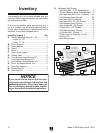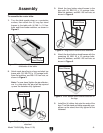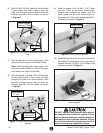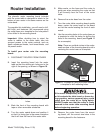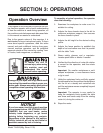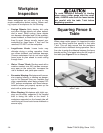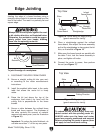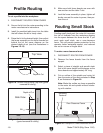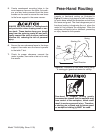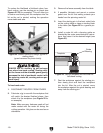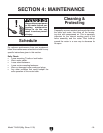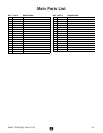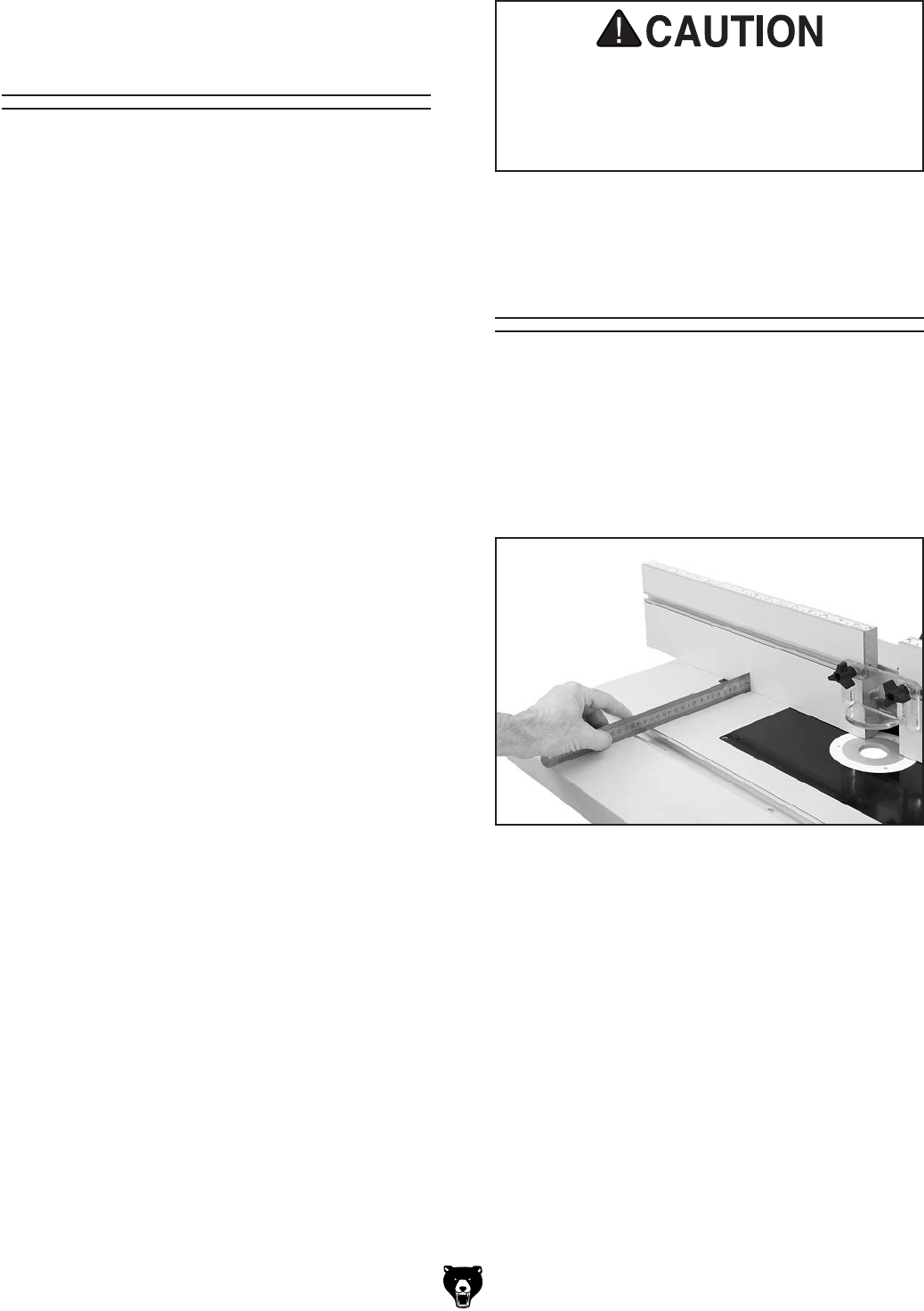
-14-
Model T10432 (Mfg. Since 11/10)
Workpiece
Inspection
Some workpieces are not safe to cut or may
require modification before routing. Before rout-
ing, inspect all workpieces for the following:
• Foreign Objects: Nails, staples, dirt, rocks
and other foreign objects are often embed-
ded in wood. While routing, these objects
can become dislodged and hit the operator,
cause kickback, or break the bit, which might
then fly apart. Always visually inspect your
workpiece for these items. If they can't be
removed, DO NOT cut the workpiece.
• Large/Loose Knots: Loose knots may
dislodge during a cutting operation. Knots
can cause kickback and machine damage.
Choose workpieces that do not have large/
loose knots or plan ahead to avoid cutting
through them.
• Wet or "Green" Stock: Routing wood with a
moisture content over 20% causes unneces-
sary wear on the router bits, increases the
risk of kickback, and yields poor results.
• Excessive Warping: Workpieces with exces-
sive cupping, bowing, or twisting are danger-
ous to cut because they are unstable and
often unpredictable when being shaped. DO
NOT process workpieces with these charac-
teristics unless you properly square up the
stock with a jointer and planer.
• Minor Warping: Workpieces with slight cup-
ping can be safely supported if the cupped
side is facing the table or the fence. A
workpiece supported on the bowed side will
rock during a cut and could cause kickback or
severe injury.
To avoid workpiece kickback or binding
when using a miter gauge with this router
table, ALWAYS make sure the fence boards
are parallel with the table T-slot before
beginning operation.
Squaring Fence &
Ta bl e
When using a miter gauge, it is important to make
sure the fence boards are parallel to the table
T-slot. This will help ensure that the workpiece
does not bind or kickback during operation. Use a
fine ruler to make the distance between the fence
boards and the T-slot equal along the full length of
the table (see Figure 15 for an example).
Figure 15. Adjusting the fence parallel with the
table T-slot.



